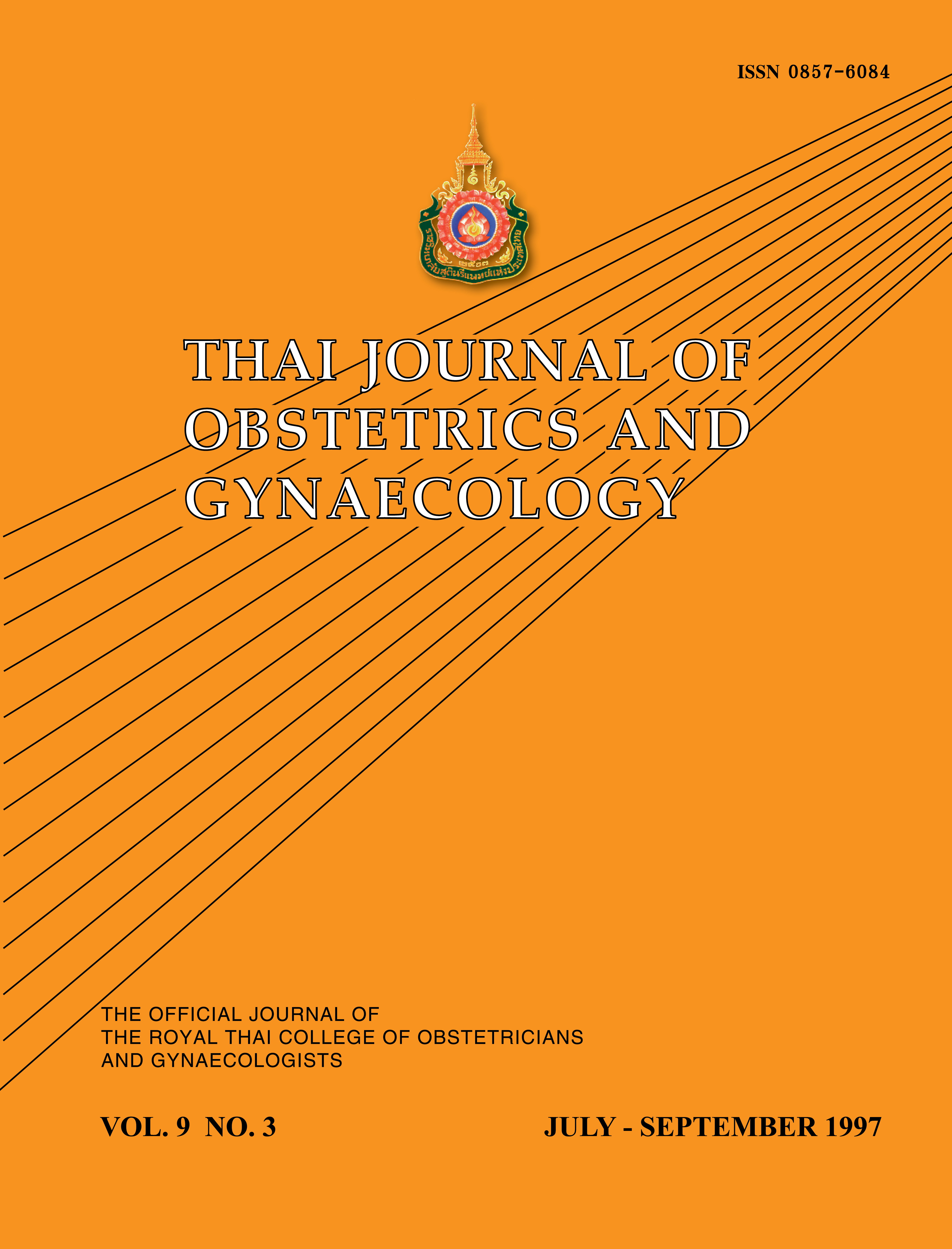Comparison of Intravaginal Misoprostol and Dinoprostone for Cervical Ripening and Labour Induction at Term with Unfavourable Cervix : a Randomized Controlled Study
Main Article Content
Abstract
Objective To study the efficacy of 100 mcg misoprostol and 3 mg dinoprostone, both as intravaginal tablet for cervical ripening and labour induction.
Subjects Sixty term pregnant women who had indicatons for labour induction with unriped cervix (Bishop score < 7) and no contraindication to prostaglandins.
Interventions All patients were randomized to receive either 3 mg dinoprostone or 100 mcg misoprostol as vaginal tablet.
Main outcome measures Mode of delivery, Bishop score before medication, after 6 and 12 hours of medication, treatment interval from insertion to delivery, Apgar score, maternal and neonatal complications.
Results There was no statistical difference between both groups with regards to obstetric characteristics and the mean pre-treatment Bishop scores. Bishop scores after 6 and 12 hours of medication and tachysystole were significantly higher in those receiving misoprostol (P < 0.05). Induction to delivery interval was significantly lower in those receiving misoprostol (P < 0.05). There was no significant difference in mode of delivery, Apgar score, hyperstimulation, neonatal and maternal complications.
Conclusion Intravaginal misoprostol (100 mcg) is more effective agent for cervical ripening and labour induction than intravaginal dinoprostone tablet (3 mg). However, misoprostol is associated with a higher prevalence of tachysystole than dinoprostone but with no difference in maternal and neonatal complications.
Article Details

This work is licensed under a Creative Commons Attribution-NonCommercial-NoDerivatives 4.0 International License.


